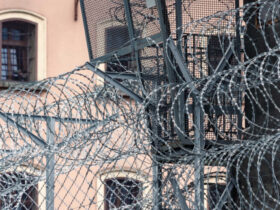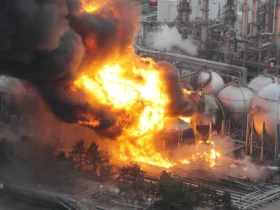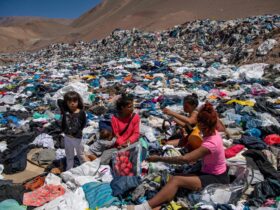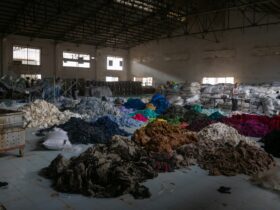The debate surrounding nuclear energy is as old as the technology itself: is it the sustainable solution to energy deficits and climate change, or is it dangerous and harmful to our wellbeing in the long run?
This conversation has followed the proliferation of nuclear power plants as well as its disasters, with infamous ones such as Chernobyl sticking in the public’s mind. However, there is no clear answer in this debate. Rather, it is important to recognize the merits of both sides and make informed decisions on a case-by-case basis.
CONS – Ivana Karastoeva
A major concern regarding nuclear energy usage is safety in regards to humans, animals, and the land and ecosystems around us.
The immediate fallout from the 1986 nuclear meltdown catastrophe in Chernobyl, Ukraine included radiation sickness, which caused the death of 134 workers present on the site. Meanwhile, those who survived suffered from radiation-induced cataracts. Long term health effects were also observed. According to the Journal of Radiological Protection, higher incidence of thyroid cancer among children and adolescents who were exposed to radiation has been observed 20 years following the incident.
Moreover, the surrounding landscape was also heavily impacted. According to the Nuclear Energy Agency, a dense cloud of radioactive dust containing cesium-137 and more than a dozen other radionuclides engulfed surrounding forests and fields. Since then, the migration of airborne radionuclides into the forest soil has led to many plants adopting them into their life cycle, prolonging contamination.
Though it appears that Chernobyl has been a flourishing biodiversity hub for plants and animals since the absence of humans, studies have shown that the radiation this wildlife has been exposed to has had extreme biological effects. For example, bird species residing in areas of high radiation have experienced higher mortality rates, smaller brains and mutations, evidencing significant genetic damage.
A more recent example of nuclear power plants harming ecosystems is the Indian Point Nuclear Plant. This plant was permanently shut down on April 30, 2021, for unrelated reasons, but during its 59-year operation, it was discovered that the plant’s cooling water intake system had killed billions of fish, eggs and fish larvae annually, contributing to the decline of fish species populations in the Hudson River.
National security is also a matter of concern. In the case of a terrorist attack or a foreign occupation during wartime as seen with the Russian occupation of the Zaporizhzhia nuclear power plant in southeastern Ukraine, nuclear power plants are vulnerable targets.
Another concern that is brought up — if not the most important one — is the handling of nuclear waste. Nuclear fuel rods remain radioactive for about 10,000 years, and more than a quarter million metric tons of highly radioactive waste have been produced worldwide from nuclear plants and weapons production facilities.
Despite this, there still exists no long-term solution to storing this waste safely and effectively. Currently, all nuclear waste produced by a plant is stored on-site in dry casks. In some cases, these temporary containers have outlived their design lives and leaked harmful radiation to their surrounding environment. One example is the Hanford Nuclear Waste Site in Washington state, where an estimated 3.5 gallons of radioactive waste were said to be leaking from the storage tanks per day, contaminating the soil and the Columbia River.
Currently, Finland is creating the world’s first nuclear waste tomb meant to contain nuclear waste secured underground for 100,000 years. This, however, brings up a new concern regarding how to best communicate the dangers of these permanent disposal sites long after humanity goes extinct.
PROS – Samantha Chapman
While nuclear energy isn’t perfect, it is currently the best compromise between adequate energy to power modern energy needs and a low-carbon source that meets climate goals and reduces greenhouse gas emissions.
It’s hard to be picky when there are so few options in a time of crisis. There are cleaner energy sources like wind and solar power, which are renewable and produce minimal to zero waste. However, as the technology stands, these sources are unreliable — solar energy can only be generated during the day, and even then only when the weather permits. Moreover, wind energy can only be generated when it’s windy, and the technology is not yet advanced enough to properly store any excess energy created at these times.
As a result, this energy cannot be relied upon as any community’s main source of energy. It’s a useful supplement, but still necessitates another reliable energy source.
On the other end of the spectrum, sources like coal or oil are extremely reliable and can be used on demand. However, they are a lot more harmful to the environment than nuclear energy. They pollute the air and oceans, and release greenhouse gasses into the atmosphere, which are major contributors to climate change. Meanwhile, nuclear energy is a carbon-free energy source and generates almost one third of the world’s carbon-free electricity. So at this crucial point in time, nuclear energy is the compromise we need.
With the current rate of carbon emissions and rapidly mounting global temperature, we cannot afford to be selective with solutions.
Nuclear energy is by no means perfect, but it is important to think about how any risks or by-products can be limited instead of dismissing the possibility as a whole. Nuclear reactors can be dangerous, but with proper management and safety culture, any associated risks can be significantly reduced.
No alternative is going to be accident-proof — everything comes with its share of risks and potential problems. It’s a matter of managing the risks specific to nuclear energy. For instance, the disaster at Fukushima is considered a man-made incident which was triggered by natural hazards, one that could and should have been avoided. There was inadequate regulatory oversight in Japan and a sloppy safety culture at the plant.
A similar plant, Onagawa, was also hit by the same earthquake and suffered from flooding; yet, it shut down effectively and avoided disaster. The difference between the two were the managing teams, meaning one that emphasized tight safety regulations and one that did not. Relative to the number of nuclear reactors operative in the past and currently operative, the number of disasters is extremely low. Just three major disasters (Chernobyl, Fukushima and Three Mile Island) have occurred. This shows both how few and far between disasters are, and how essential safety culture at the plants is to their stability.
The production and management of nuclear waste is a major consideration of nuclear energy, as it should be. It is important to have a comprehensive knowledge of any system, and waste by-products are an important aspect of nuclear energy.
However, nuclear energy produces minimal amounts of waste relative to other energy sources, which is to say it is extremely energy-dense. For the equivalent of the energy extracted from a single one-inch pellet of Uranium, 17,000 cubic feet of natural gas, 120 gallons of oil or one ton of coal would have to be burned, Thus, producing the same amount of energy generates less comparative waste.
It cannot be overlooked that this waste is toxic, and while it is not harmful in the same way as carbon emissions, it has issues of its own. However, it is better to recognize the problems that come with nuclear energy and ask how we can develop technology to neutralize them, rather than using them as reasons to abandon it entirely.
For instance, new reactor designs have recently been developed that can operate on used fuel, which would cut down on waste. Whereas the issue with fossil fuels is unavoidable (as it will always involve releasing carbon into the atmosphere), the problems with nuclear energy can be solved with further development of technology.
An example of a country that has embraced nuclear energy is France. Over 70 percent of the country’s energy comes from nuclear power and 17 percent comes from recycled nuclear fuel. As a result, France has relatively low carbon emissions at about 4.46 metric tons of carbon dioxide emissions per capita in 2019 compared to Germany’s 7.91, Russia’s 11.8 and the United States’ 14.67. After nuclear, France’s energy comes from hydro and wind power, with natural gas, coal and oil collectively only making up less than 9 percent of their energy.
The proliferation of nuclear energy in France came about in 1974 after the first oil shock, when France decided to expand its nuclear power capacity. This decision stemmed from the fact that the country is advanced in engineering, but has limited natural resources. It is also the world’s largest net exporter of electricity due to the very low cost of energy generation in nuclear power plants, which brings in over $3 billion a year, an argument for the financial and economical aspect of nuclear energy.
Because of the country’s reliance on nuclear energy, France is also a leader in nuclear technology and reactors. Since 1985, France has reduced its nuclear waste production by two thirds. Its waste is processed, sealed in specially designed containers and placed in temporary storage in a plant, where it is to be moved in 2035 to an underground secure storage facility for long-term residence.
Conclusion
Nuclear energy is truly a topic of major contention in the sustainable energy debate. On the one hand, it produces zero carbon emissions and is the most reliable source of clean energy — but on the other, it produces radioactive waste that will surpass human existence.
But all hope is not lost as scientists continue to work to find new, cleaner and more efficient energy sources that meet our energy without bringing harm to the environment.







